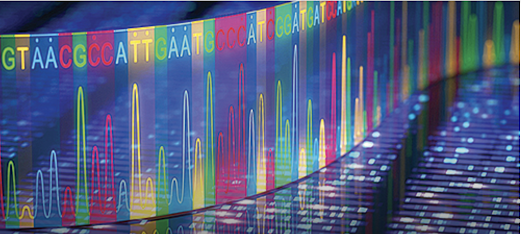Next-generation DNA sequencing (NGS) detects bacteria-specific DNA corresponding to the 16S ribosomal RNA gene and can identify bacterial DNA presence with greater accuracy than traditional culture methods. These authors point out that clinical relevance of these findings is unknown. They sought to compare the results from bacterial culture and NGS in order to characterize the potential use of NGS in orthopaedic trauma patients.
They enrolled three patient groups: (1) patients undergoing surgical treatment of acute closed fractures (presumed to have no bacteria), (2) patients undergoing implant removal at the site of a healed fracture without infection, and (3) patients undergoing a first procedure for the treatment of a fracture nonunion who might or might not have subclinical infection. Surgical site tissue was sent for culture and NGS. The proportions of culture and NGS positivity were compared among the groups.
Bacterial cultures were positive in 9 of 111 surgical sites (110 patients), whereas NGS was positive in 27 of 111 surgical sites (110 patients). Significantly more cases were positive on NGS as compared with culture (24% vs. 8.1%; p = 0.001), primarily in the acute closed fracture group (in which there was no reason to expect infection). No difference was found in terms of the percent positivity of NGS when comparing the acute closed fracture, implant removal, and nonunion groups. With respect to bacterial identification, culture and NGS agreed in 73% of cases indicating only slight agreement compared with expected chance agreement of 50%.
The authors concluded that NGS identified bacterial presence more frequently than culture, but with only slight agreement between culture and NGS. Their data suggest that NGS should not currently substitute for or complement conventional culture in orthopaedic trauma cases with low suspicion of infection.
Here are some other articles on the topic of NGS:
Next-generation sequencing for diagnosis of infection: is more sensitive really better?
These authors point out that the utility of next-generation sequencing (NGS) in differentiating between active infection and contaminant or baseline flora remains unclear. They conducted a study of primary shoulder arthroplasty patients with no history of infection or antibiotic use within 60 days of surgery was enrolled. All patients received standard perioperative antibiotics. After skin incision, a sample of the medial skin edge was excised. A synovial tissue biopsy was taken from the rotator interval after subscapularis takedown. Each sample set was halved and sent for NGS and standard cultures.
The 3 most common bacteria identified by NGS of the skin samples (all species 10% of bacterial burden) were C acnes (44%, 11 individuals), Staphylococcus epidermidis (24%, 6 individuals), and Escherichia coli (20%, 5 individuals). The following species were each detected at the 10% bacterial load threshold for 1 patient: Enterococcus faecalis, Bacillus senegalensis, Staphylococcus saccharolyticys, Corynebacterium kroppenstedtii, Porphyromonas uenonis, Ureaplasma urealyticum, Arthrobacter sp, and Corynebacterium sp.
The 3 most common bacteria identified by NGS of the deep tissue samples (all species 10% of bacterial burden) were E coli (16%, 4 individuals), C acnes (12%, 3 individuals), and S epidermidis (8%, 2 individuals). The following species were each detected at the 10% bacterial load threshold for 1 patient: Staphylococcus aureus, Neisseria shayeganii, Streptococcus equinus, Catenabacterium mitsuokai, and Megamonas funiformis.
The article did not directly compare the bacterial species identified by (a) culture and (b) NGS for each patient.
Finally, as in the case of the article discussed below, it would have been helpful if the authors had run negative controls for NGS to make sure that the unexpected bacterial DNA found by NGS (e.g. E Coli, Bacilli, Porphyromonas, Ureplasma, Arthrobacter, Neisseria, Megamonas) were not the result of DNA contamination unrelated to the presence of viable organisms.
Comparative study of cultures and next-generation sequencing in the diagnosis of shoulder prosthetic joint infections
In 44 patients undergoing revision shoulder arthroplasty, these authors compared bacterial identification by (1) culturing and (2) next-generation sequencing (NGS). They included patients with and without preoperative clinical signs of infection. Tissue samples were obtained from the anterior capsule, inferior capsule, glenoid, humeral canal, and underneath the prosthetic humeral head was obtained using “fresh” instruments. Culture media included anaerobic sheep blood agar and anaerobically prereduced hemin-thioglycolate broth. Aerobic media were apparently not used.
You can support cutting edge shoulder research that is leading to better care for patients with shoulder problems, click on this link.
Follow on twitter: https://twitter.com/shoulderarth
Follow on facebook: click on this link
Follow on facebook: https://www.facebook.com/frederick.matsen
Follow on LinkedIn: https://www.linkedin.com/in/rick-matsen-88b1a8133/
Here are some videos that are of shoulder interestShoulder arthritis - what you need to know (see this link).How to x-ray the shoulder (see this link).The ream and run procedure (see this link).The total shoulder arthroplasty (see this link).The cuff tear arthropathy arthroplasty (see this link).The reverse total shoulder arthroplasty (see this link).The smooth and move procedure for irreparable rotator cuff tears (see this link).Shoulder rehabilitation exercises (see this link).
Follow on twitter: https://twitter.com/shoulderarth
Follow on facebook: click on this link
Follow on facebook: https://www.facebook.com/frederick.matsen
Follow on LinkedIn: https://www.linkedin.com/in/rick-matsen-88b1a8133/


